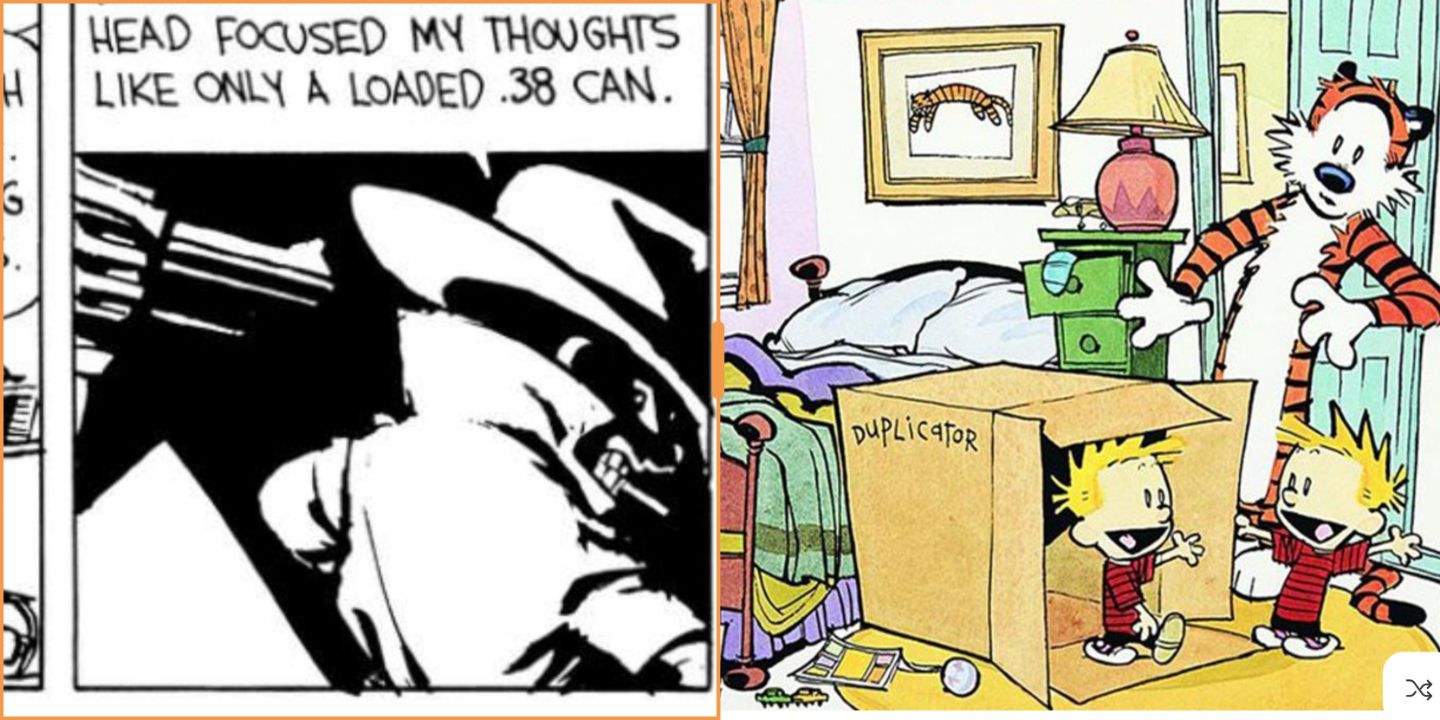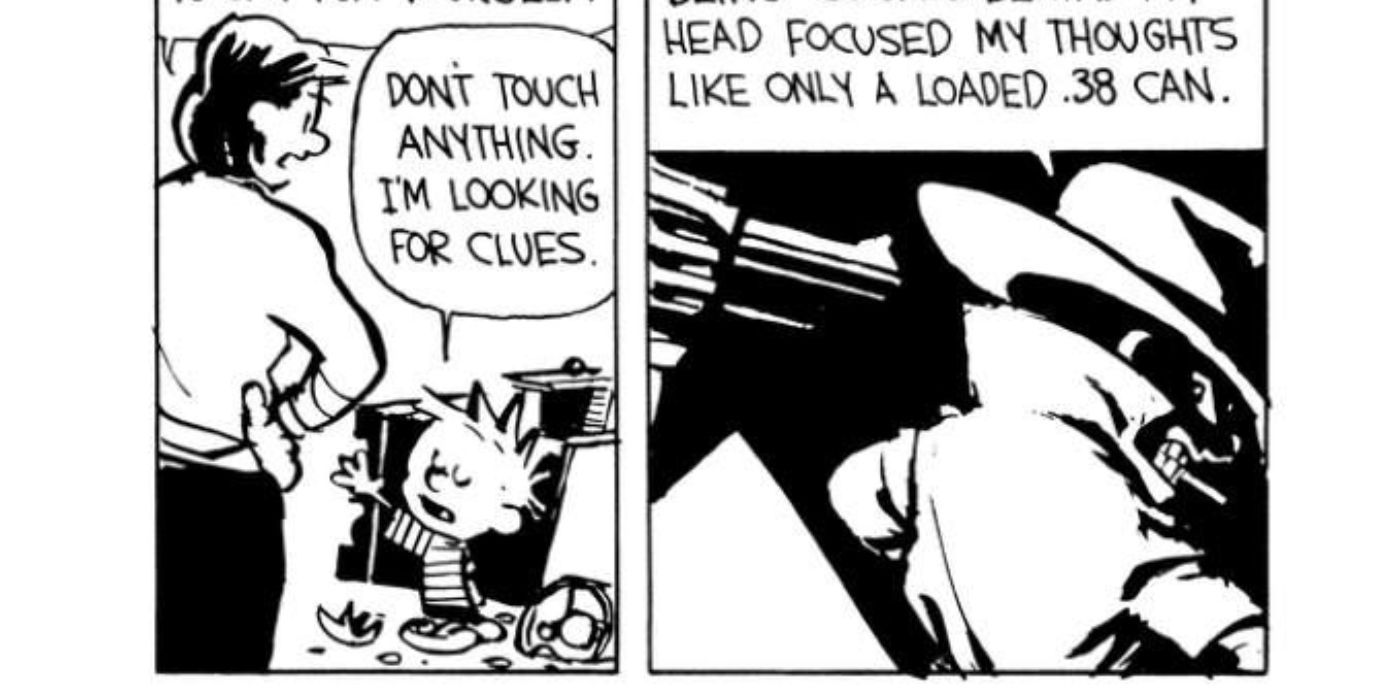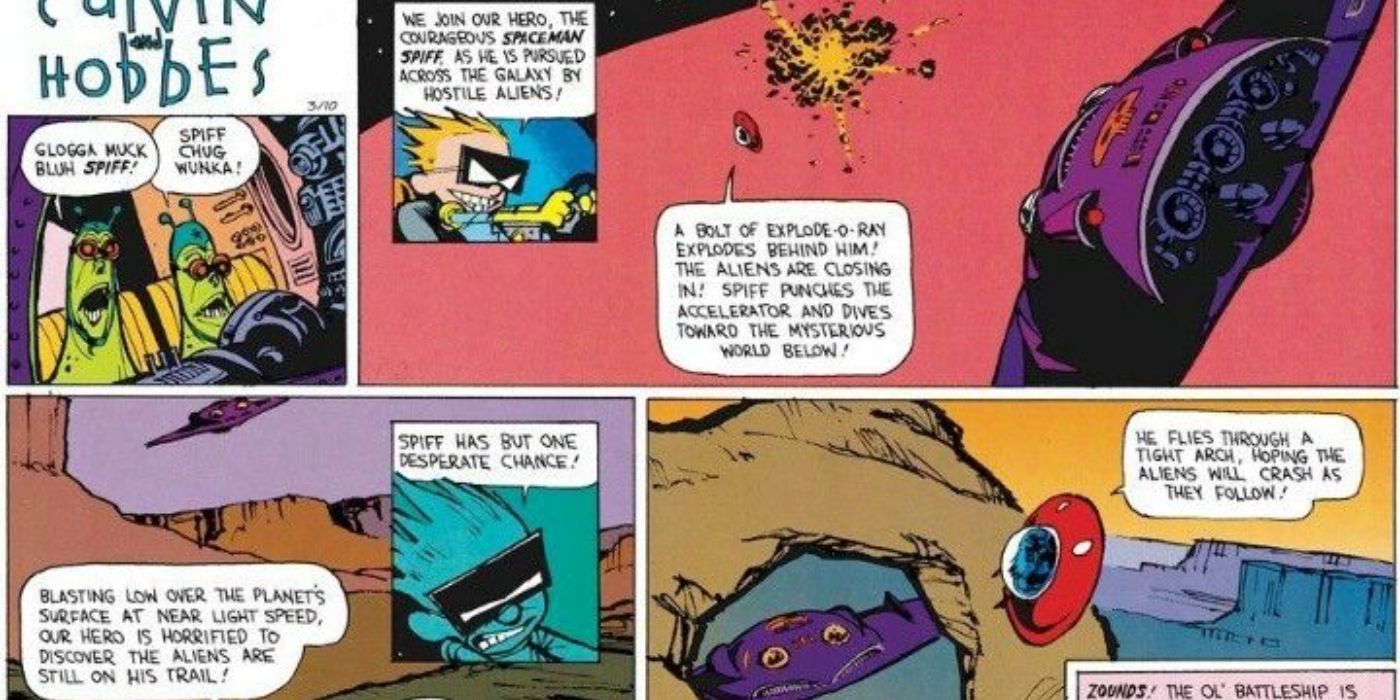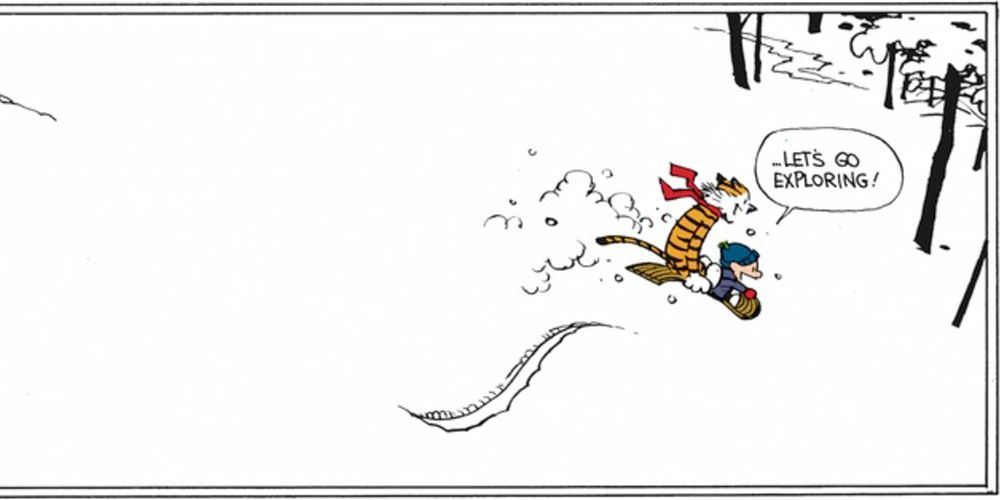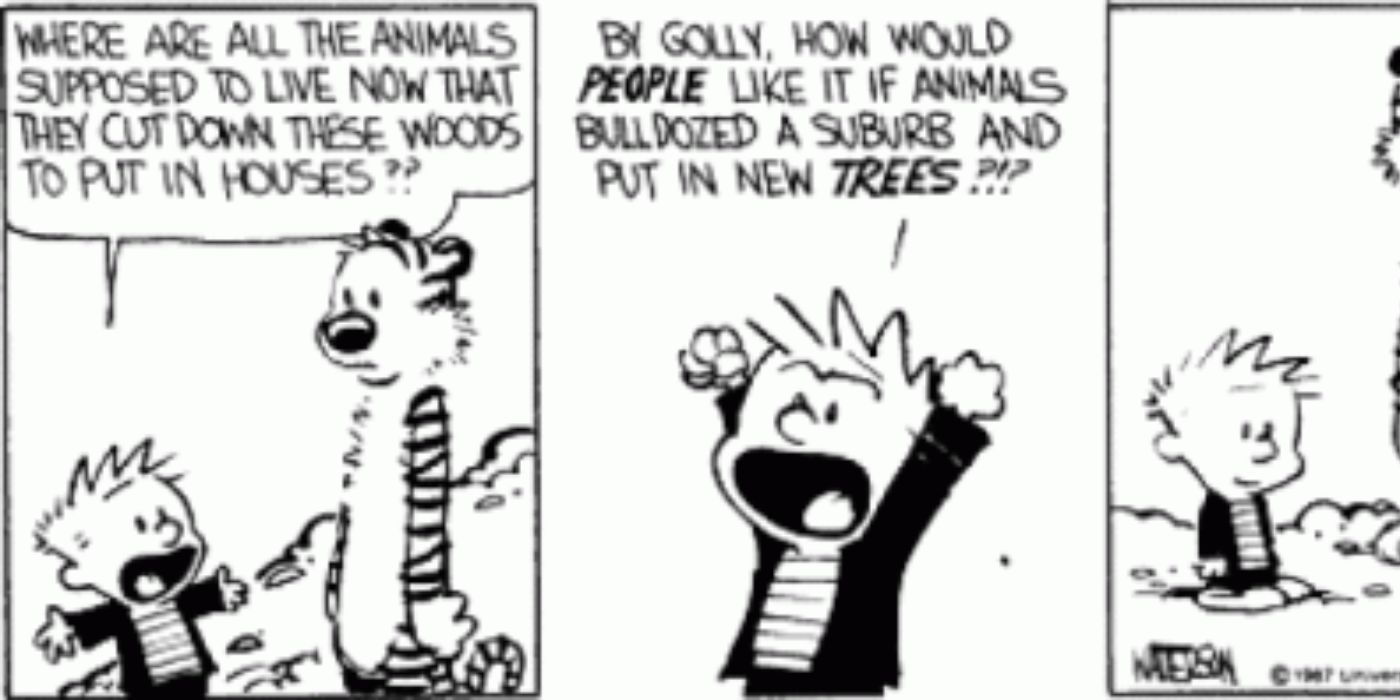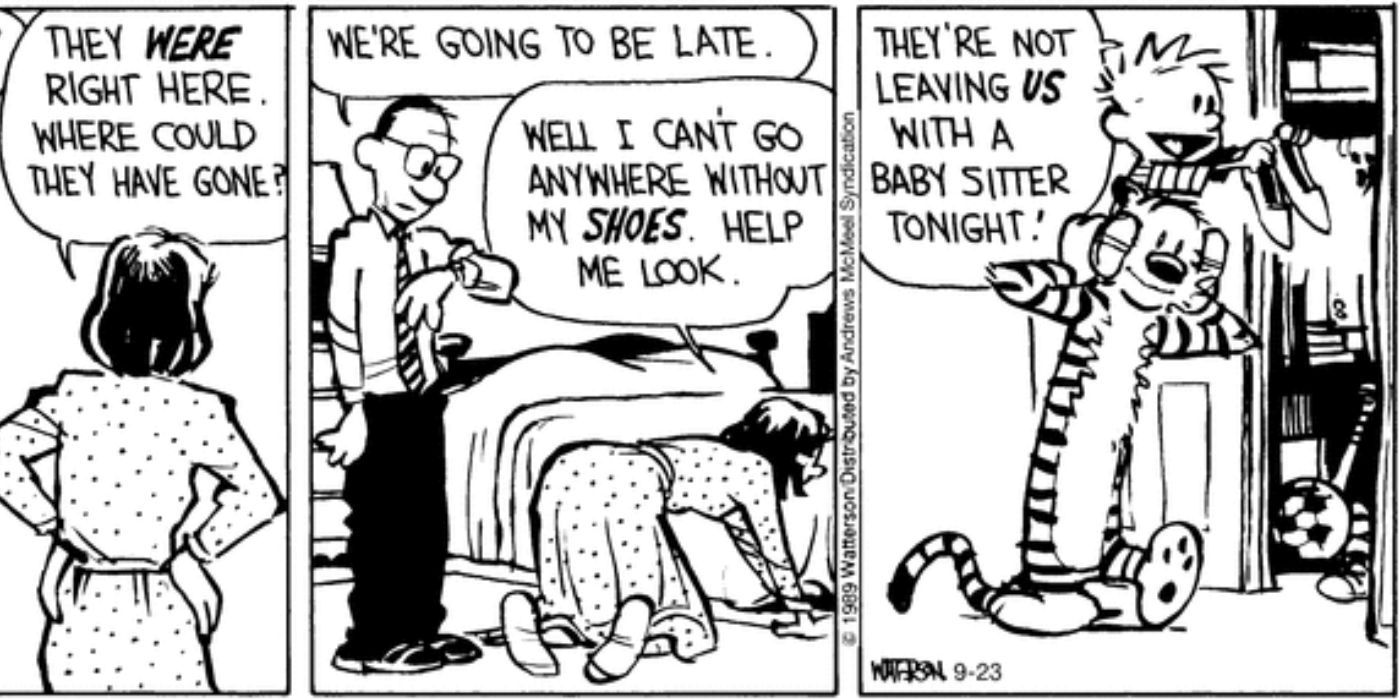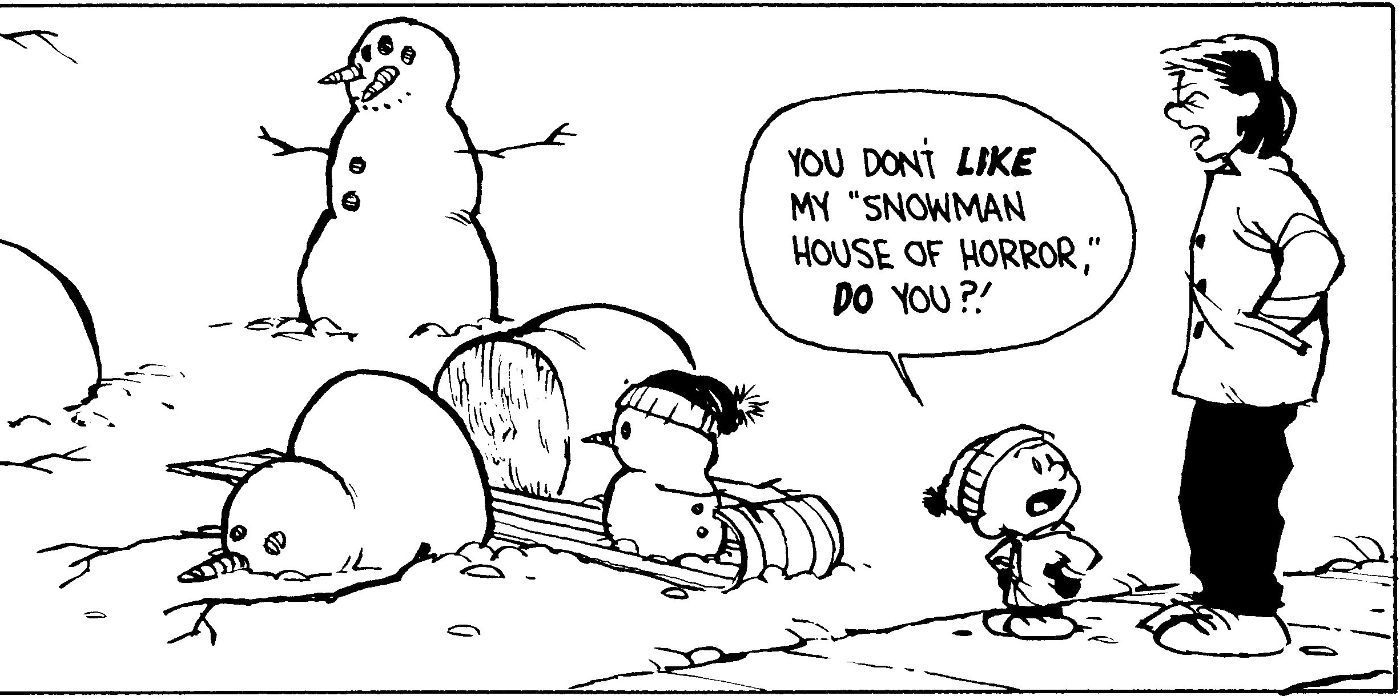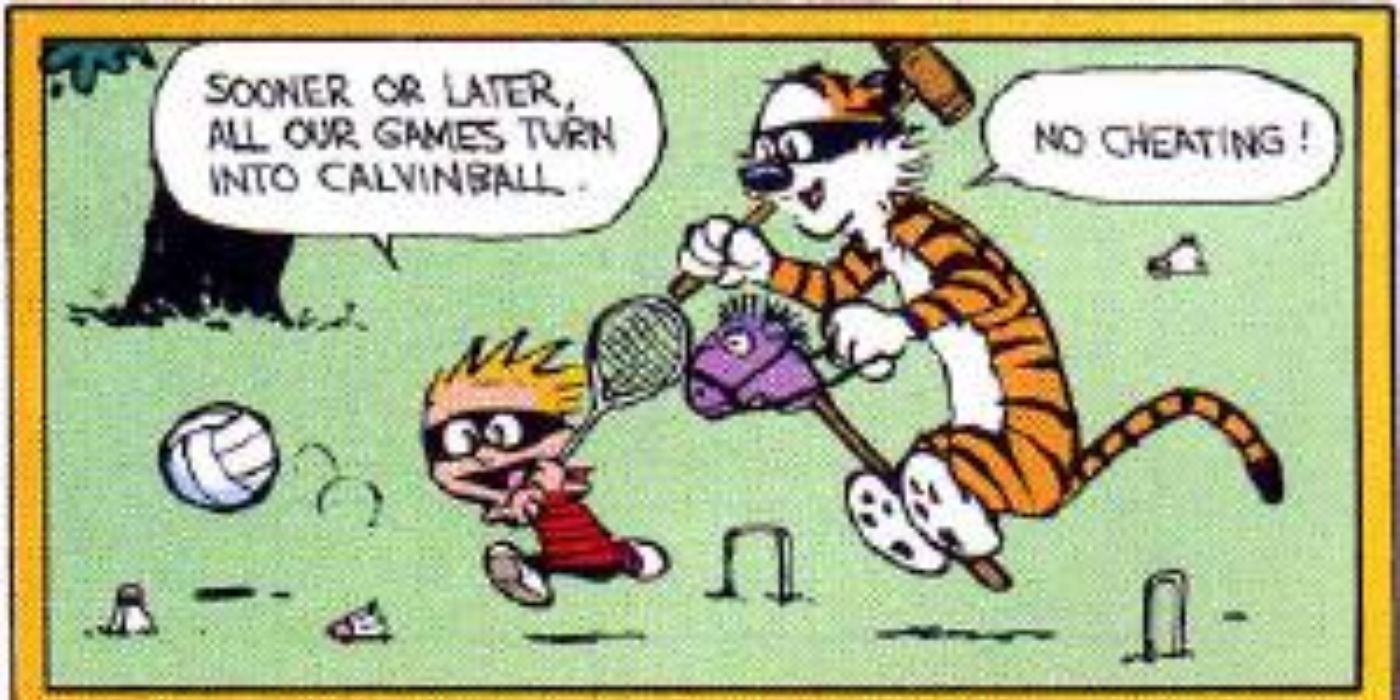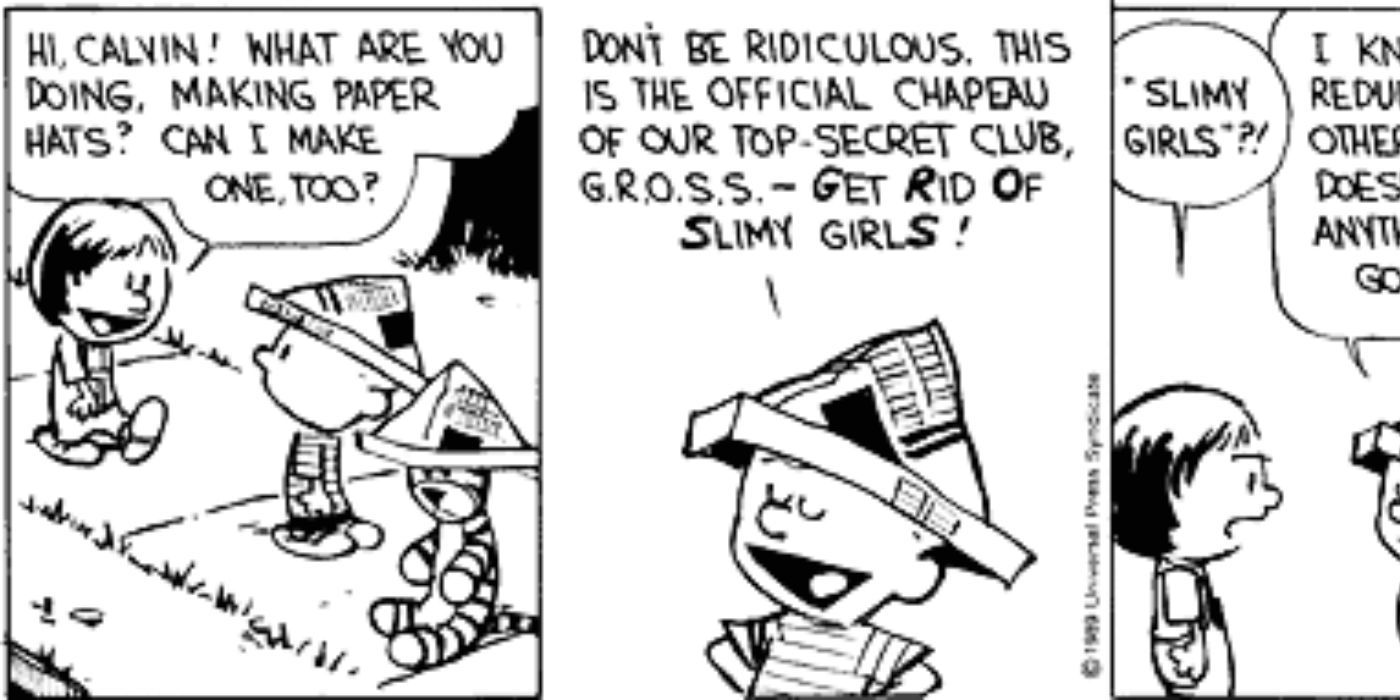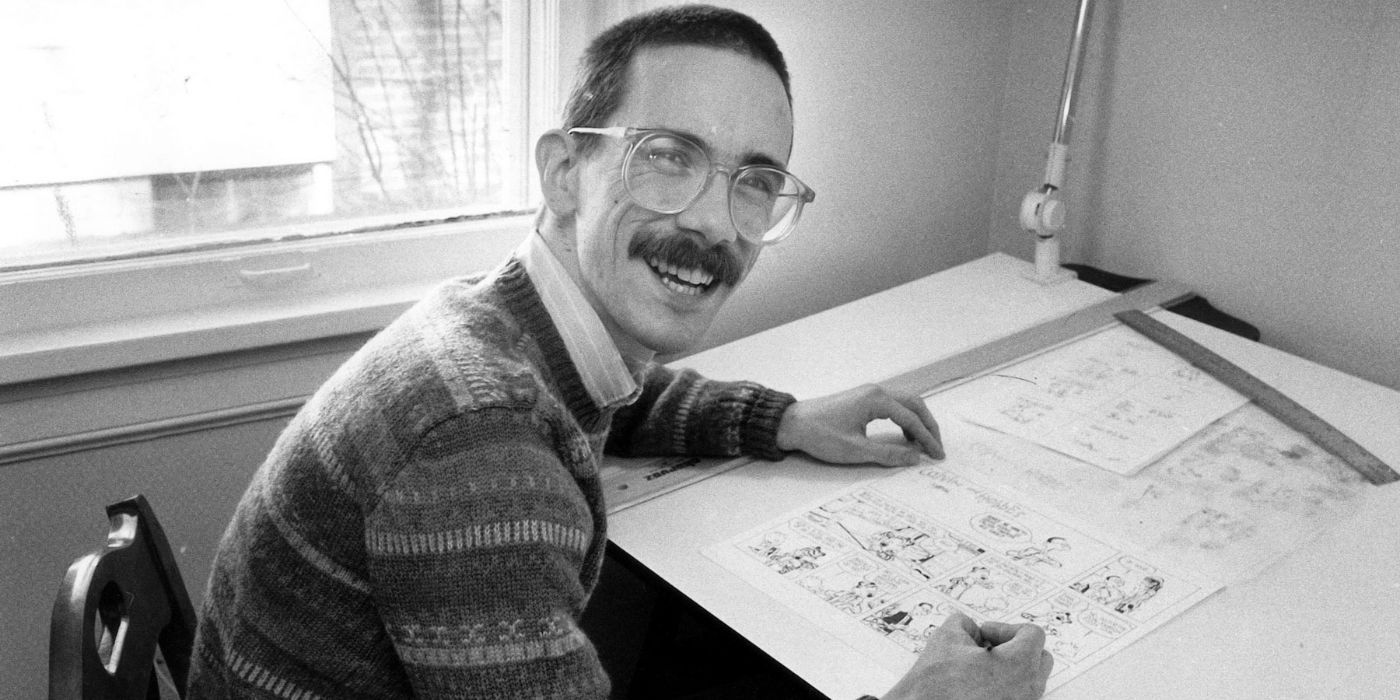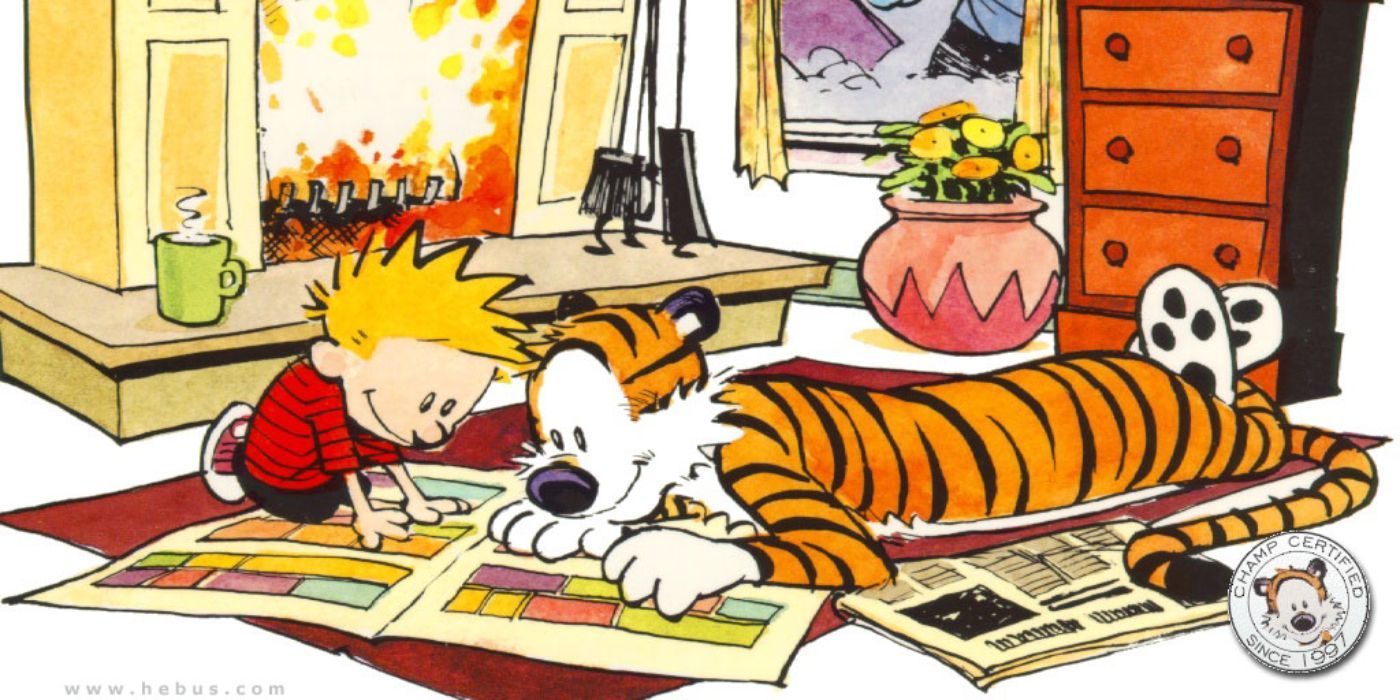Bill Watterson's Calvin & Hobbes is one of the most ground-breaking newspaper comic strips ever created. Running from 1985 to 1995, the strip chronicled the adventures of six-year-old Calvin and his stuffed tiger/imaginary friend Hobbes. Known for its humor, creativity, and heart, Calvin & Hobbes earned its place in American pop culture.
Calvin & Hobbes was groundbreaking in a variety of ways. By keeping a tight grip on all aspects of the strip, Watterson ensured his artistic vision remained true. Even twenty-five years after the culmination of Calvin & Hobbes, the strip remains an icon of American graphic media.
10 Watterson's Style Had Tremendous Range
Newspaper comic strips have a difficult line to walk. Their style must be distinct, but it also must be easily accessible. While many cartoonists smartly use this guideline to make simple, charming characters, Watterson's pencils, inks, and colors on Calvin & Hobbes only showed off his enormous creative range.
In an average Calvin & Hobbes strip, Watterson would use simple, slightly-exaggerated lines to show the outsized world of his pint-size protagonist. However, when Watterson wanted to present Calvin's imagination to his readers, his style would switch to a pulpier, action-oriented style to complement Calvin's fantasies.
9 Watterson Was A Master of Formatting
When Calvin entered the world of Spaceman Spiff or Tracer Bullet, Watterson changed not only his style but his paneling. Along with the more action-oriented art style he embraced in these situations, Watterson employed innovative styles that allowed for giant monsters or spaceships that flew off of panels.
Even when Watterson didn't have the larger space granted by Sunday strips, he was still a master of the 4-panel format. Snowy landscapes were a consistent element in Calvin and Hobbes. Watterson used the black-and-white elements of his dailies to great effect, turning the frequently overlooked backgrounds into key elements of the story.
8 Watterson Explored Big Ideas
Calvin & Hobbes's boundary-breaking was not limited to stylistic flourishes. Watterson also used his precocious protagonist to explore ideas that transcended the confines of newspaper comic strips. As an overly-intelligent child with no filter, Calvin was the perfect tool for Watterson to pick society into pieces.
When Watterson wanted to poke fun at modern art, he had Calvin create a series of homicidal snowmen that would have made Goya proud. When he wanted to explore ideas about mortality, he would put his characters on a wagon or toboggan hurtling down a hill. As with his artistic style, Watterson used his strip to push the boundaries of comic strip vocabulary.
7 Calvin & Hobbes Was Inoffensive But Subversive
Calvin's musings in the Sunday strips weren't just pretentious meanderings. Indeed, Watterson made Calvin & Hobbes downright subversive. Watterson's satire of middle-American life was nearly perfect, ranging from the banal-yet-painful occurrences labeled by Calvin's dad as "building character" to the inventive, mischievous, "insurance" Calvin sells at roadside stands.
Watterson was able to discuss difficult topics like hierarchy, academia, and the nuclear family by putting them in the mouth of a precocious child. Through Calvin and his stories, Watterson snuck critical analysis into the Sunday funnies.
6 Calvin & Hobbes Captured The Realities Of Childhood
While Calvin & Hobbes tackled plenty of grown-up concepts, it never left the world of childhood. Calvin & Hobbes is firmly grounded in Calvin's understanding of the world. The duo's adventures take place in familiar locations familiar like school, home, and playgrounds, and its characters were figures readers recognized from their own childhoods. Calvin was surrounded by parents, neighbors, bullies, and teachers, making his world relatable and recognizable.
Calvin constantly struggles with his desire for control. Like most kids, Calvin doesn't have much power, even over himself. Watterson embraces the wonder as well as the difficulties embedded in childhood to effectively tell the story of a boy and his best friend.
5 Calvin & Hobbes Emphasized The Power Of Imagination
While capturing the spirit of childhood, Watterson focused on imagination. For every strip that saw Calvin sitting in class or dealing with his parents, there was a strip that featured aliens, fantasy worlds, or bloodthirsty snowmen.
Watterson portrayed Calvin's fecund imagination vividly, allowing it to do things like transform ordinary cardboard boxes into time machines and race cars. One of the strip's central conceits is that only Calvin can see Hobbes as anything more than a toy, a concept that forces readers to admit imagination's raw power.
4 Watterson Crafted A Deep, Memorable Lore For Calvin & Hobbes
Springing from Calvin's imagination, and his relationships with the other characters, is a vast mythology that permeates the strip. This mythology works on two levels: imaginary elements like Calvin's adventures as Spaceman Spiff and real elements like the anarchic game of Calvinball.
In addition to helping emphasize the power of imagination, the recurring lore of Calvin and Hobbes underscores how much young people construct their own worlds. While Calvin is forced into situations like homework and babysitting, the plethora of in-universe, Calvin-created concepts like Calvinball and killer snow goons illustrate youth's power to remake its world.
3 Calvin & Hobbes Was Always Relatable
By telling stories about avoiding babysitters and using imagination, Watterson made his stories incredibly accessible. Even today, kids love Calvin & Hobbes because of its relatability and Calvin's mischief, while adults read the strips and remember the halcyon days of youth.
Calvin's precociousness formed a perfect middle ground for its readers. Everyone can relate to being frustrated with a teacher or the weird gender politics of the schoolyard. By choosing subjects at the heart of American culture, Watterson made Calvin & Hobbes a strip for everyone.
2 Watterson's Independence Let The Strip Remain Untouched
As Calvin was fiercely independent, so was Bill Watterson. The strip's creator is famous for his refusal to create any licensed merchandise, even turning down Steven Spielberg when the famed director approached him to make a movie about his characters. Watterson also fought tooth and nail for creative control, always pushing newspaper comics' boundaries.
Watterson's unusual ambition allowed his strip to flourish; the way he protected his ideas ensured their lasting potency. Watterson could write about life and love honestly. Today, Calvin & Hobbes is still considered a brilliant work of art, not just simple stories about a boy and a stuffed tiger.
1 Calvin & Hobbes Stayed True To Itself
The combination of Calvin's child-like perspective with big ideas and the realities of childhood made Calvin & Hobbes a one-of-a-kind strip. Watterson poured his heart into his work to create a world that anyone could empathize with, never compromising his vision for the sake of corporate greed.
Ultimately, Watterson's insistence on keeping Calvin & Hobbes a creator-controlled comic strip is what made it so very different. At once biting satire, all-ages humor, and a heartfelt remembrance of childhood, Calvin & Hobbes remains the gold standard for American cartooning.

